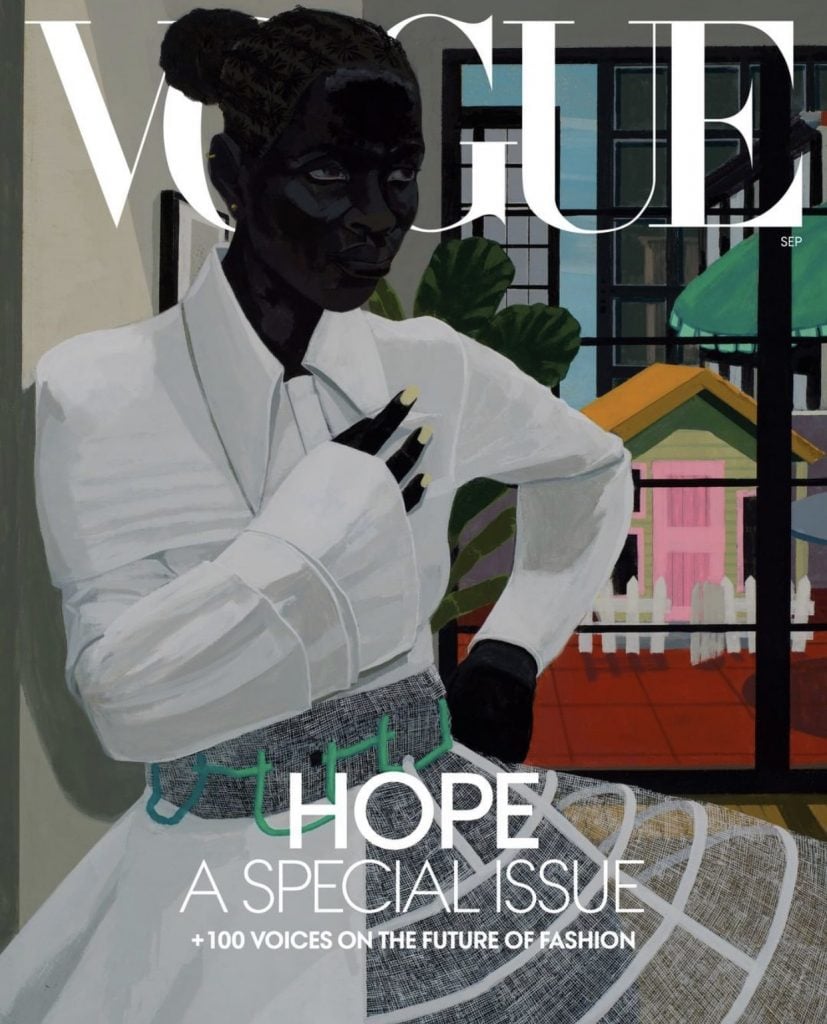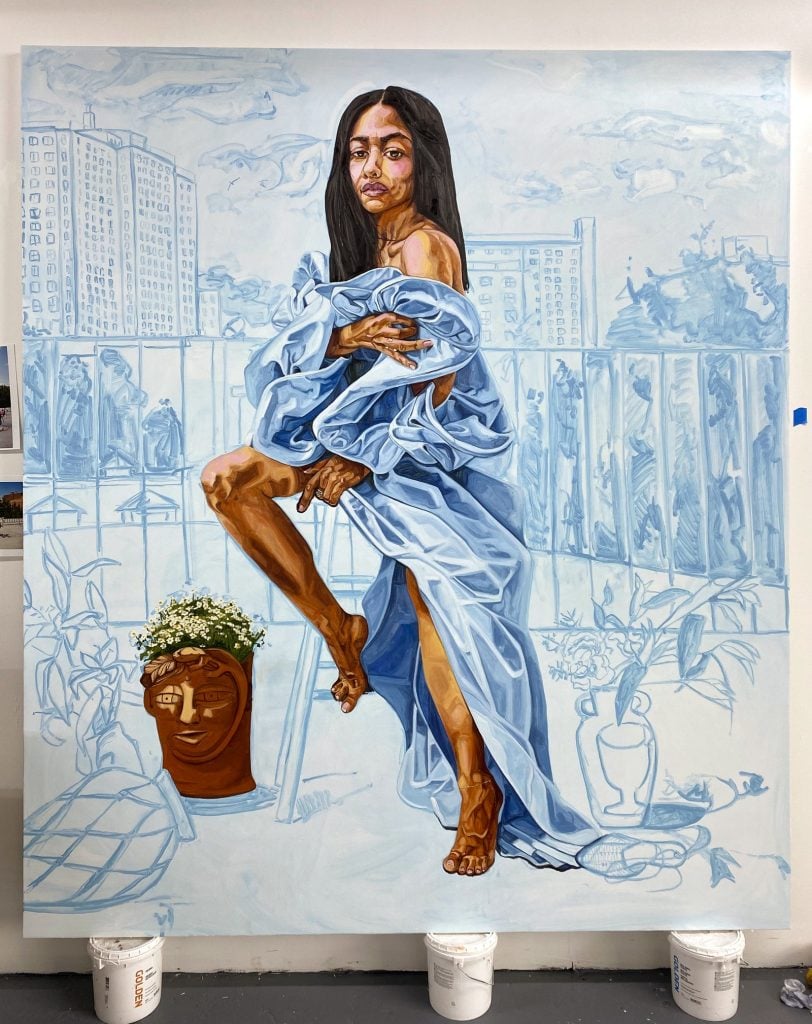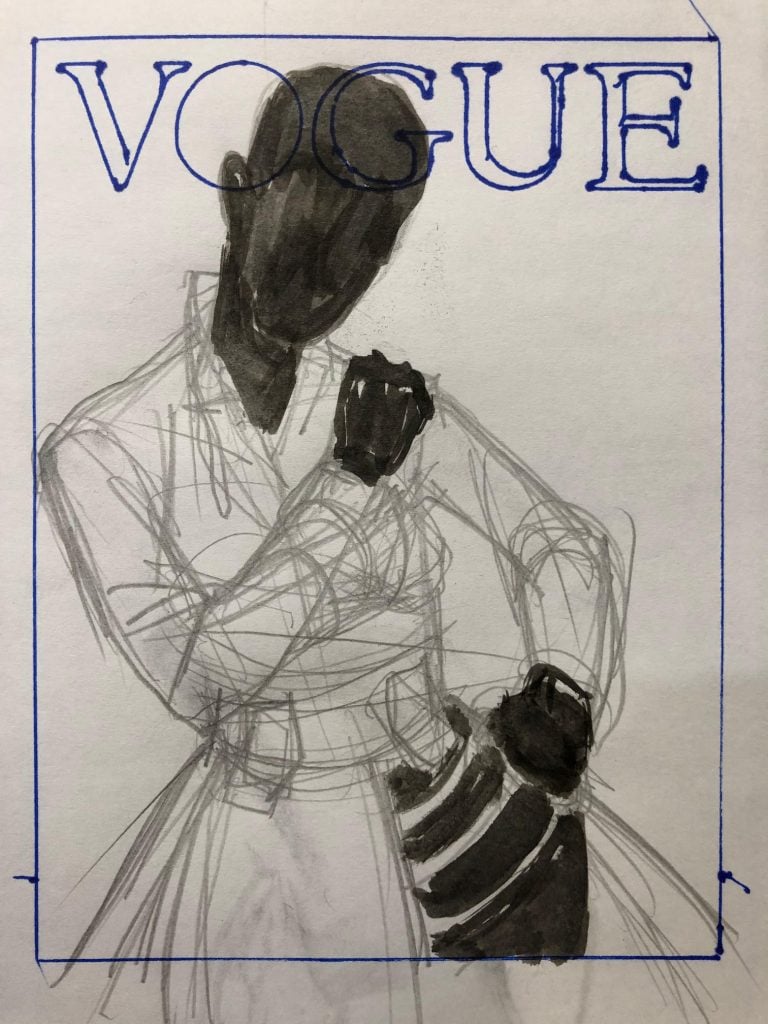Art World
Artists Kerry James Marshall and Jordan Casteel Created New Paintings for the Cover of Vogue’s September Issue
The painters join a short list of contemporary artists asked to design covers for the magazine.

The painters join a short list of contemporary artists asked to design covers for the magazine.

Sarah Cascone

For its blockbuster September issue, Vogue has tapped not one, but two African American artists to paint separate covers, with images by Kerry James Marshall and Jordan Casteel.
The September issue, which is traditionally the publication’s biggest and most important of the year (the making of which is the subject of a 2009 documentary of the same name), ushers in the beginning of the new fashion year and includes hundreds of pages of glossy photo spreads and luxury advertisements.
In an unprecedented arrangement, both artists were given free rein to paint the subjects of their choice, either real or imaginary, on the theme of hope, so long as the figures wore dresses by one of four designers chosen by Vogue.
Marshall’s woman, wearing an Off-White brand evening dress by Virgil Abloh, does not represent any single woman, but rather the beauty of all Black women. The 64-year-old artist created the figure’s skin ton by mixing carbon black, mars black, and bone black with shades of cobalt blue, chrome green, carbazole dioxazine violet, yellow ochre, and raw sienna paints.

Kerry James Marshall’s cover for Vogue. Courtesy of Vogue.
“If you’re going to be painting a face as Black as I’m painting them, they can’t just be a cipher, like a black hole. They have to be mysterious but available,” Marshall told Vogue. “If you say, ‘Black is beautiful,’ you have to show it. And what I’m doing is showing it at the extreme. Yes, it is black—very black—and it is very beautiful.”
For her cover, the 31-year-old artist Jordan Casteel painted designer and activist Aurora James in a blue Pyer Moss dress, in honor of James’s new 15 Percent Pledge, which challenges major retailers to reserve 15 percent of their shelf space for products made by Black-owned businesses.
(It is the first time a designer has had the cover of the magazine to herself; Stella McCartney is the only other designer to land on the cover, in a group photograph with Greta Gerwig, Ashley Graham, and Cardi B in January.)

Preliminary art for Jordan Casteel’s cover for Vogue. Courtesy of Vogue.
“I believe that what Aurora is doing is hugely important in creating the long-term change that Black people deserve and this country owes us,” Casteel told the magazine. “I see her as a light in a lot of darkness, and a potential for hope, a representative of change across all creative industries.”
Vogue is taking James’s pledge, and “will make every effort toward ensuring that at least 15 percent of our freelance contributors are Black” starting in 2021, editor-in-chief Anna Wintour wrote in an email to the magazine’s staff, according to the Washington Post.
In the magazine’s 128-year history, covers by contemporary artists have been a rarity.
Salvador Dalí had the honor on four occasions across as many decades, but a design commissioned from Marcel Duchamp was rejected in 1943. But other covers were put together by Marie Laurencin in 1923, Giorgio de Chirico in 1935, and, most recently, John Currin in 2017, who painted actress Jennifer Lawrence.

Preliminary art for Kerry James Marshall’s cover for Vogue. Courtesy of Vogue.
The big September issue reveal comes one day after Vanity Fair unveiled its September cover, which also featured a painting by a high-profile African American artist. Amy Sherald depicted Breonna Taylor, the young Black woman shot and killed by police while asleep at her apartment, with her signature grayscale skin tones, clad in a flowing aquamarine dress.
Taylor, whose untimely death has inspired artists on social media, also appears on the cover of the current issue of O, Oprah Winfrey’s magazine. The image on the cover of that issue, by 24-year-old African American artist Alexis Franklin, marks the first time the media mogul has not graced the cover of her eponymous publication since it was launched in 2000.
With social distancing guidelines putting a limit on magazines’ ability to conduct complex photo shoots, painting is suddenly an attractive alternative to traditional fashion photography—and spotlighting Black artists is one way to respond to charges of systemic racism in the fashion industry amid growing calls for racial justice in the wider Black Lives Matter movement.